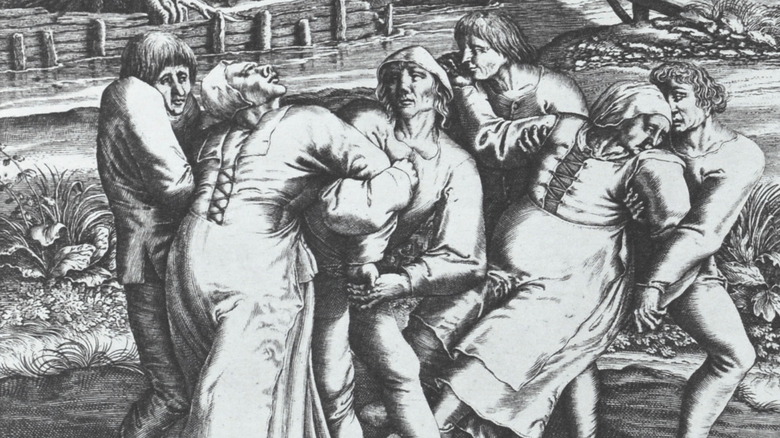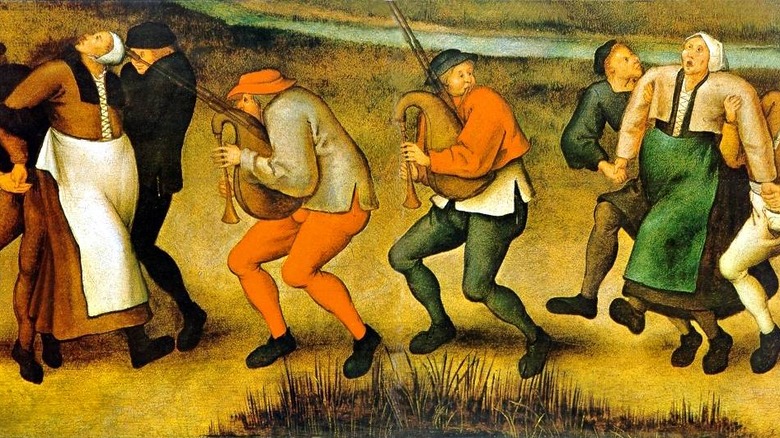The Truth About Choreomania, The Dancing Plague
Historic plagues often invoke scenes of medieval carts full of victims, while those still living struggle to understand why this fate was thrust upon them. For as long as urban centers have existed, plagues have been able to form and spread. A lack of understanding regarding pathogens and the rat-borne fleas that carried them limited the efficacy of treatment for thousands of years before inoculation became widely accepted. However, another type of plague existed that would likely even confound modern medical professionals: choreomania.
Otherwise known as Dancing Mania, choreomania is a phenomenon in which an increasing number of people are compelled to dance after seeing others do so (via The Vintage News). Contemporary doctors and religious figures were baffled, offering possession as a potential explanation for the trance-like condition. Those afflicted often danced until their feet bled and were seldom capable of taking in water or nutrients. While there is no official consensus on what caused these incidents, there are some theories.
Medical explanations alone can't fully explain the dancing plague
In an effort to explain choreomania's transmission, diseases and conditions such as Sydenham chorea, epilepsy, and ergot poisoning have all been posed as potential (secular) answers. On the surface, these seem rational as such conditions can lead to involuntary movements. Ergot Poisoning in particular had the potential to spread widely, as the cheaper grain was all that some Europeans could procure. Per witness accounts of the dancing, however, those afflicted were not merely experiencing prolonged muscle spasms or seizures, but truly dancing (via Smithsonian Mag).
The largest known bout of choreomania perfectly illustrates its effects. In 16th-century Strasbourg, a single woman's dancing induced an estimated 400 people to, seemingly, uncontrollably join her (via History.com). As doctors and officials at the time believing "hot blood" was the culprit, the dancers were encouraged to dance until they couldn't, with bands even brought in to help. The twirling and gyrating dancers evidently did not slow down as hoped, and it took weeks of their bodies wearing down for the dancing to finally stop. In contrast to the pathological explanations posited by others, Dr. John Waller characterizes this seemingly memetic condition as a "mass psychogenic illness" potentially brought on by exacerbated social and economic stress (via The Guardian).

